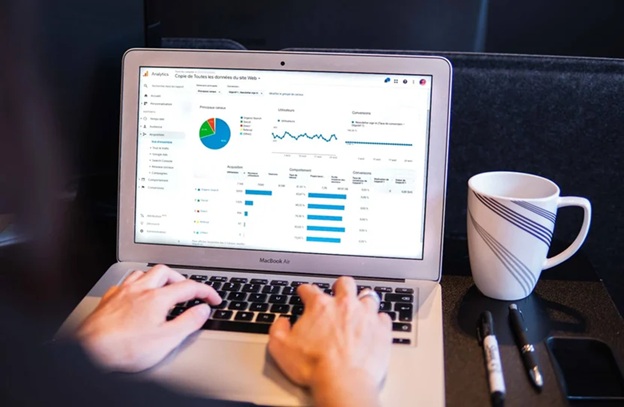Discover how to perform a sales data analysis to boost your business. Learn to collect, analyse, and apply insights to drive sales and improve strategies.
What is sales data?
Sales data is a valuable asset for businesses of all sizes. It provides insights into customer behaviour, sales performance, and market trends. By analysing sales data, businesses can make informed decisions about product development, marketing, and sales strategies.
Sales data can be collected from various sources, including point-of-sale systems, customer relationship management software, and e-commerce platforms. Once collected, the data can be analysed using various tools and techniques, such as business intelligence software and data visualisation tools.
Sales data can be used to track key performance indicators (KPIs), such as revenue, profit, customer acquisition cost, and customer lifetime value. By tracking these metrics, businesses can measure their progress and identify areas for improvement. Additionally, sales data can be used to identify trends and patterns, such as seasonal fluctuations in demand or changes in customer preferences.
For example, a business might use sales data to identify which products are most popular with customers, or which marketing campaigns are most effective. This information can then be used to make decisions about which products to invest in, or which marketing campaigns to continue.
In summary, sales data is a valuable tool that can help businesses improve their performance. By collecting and analysing sales data, businesses can gain insights into customer behaviour, sales performance metrics, and market trends. This information can be used to make informed decisions about product development, marketing, and sales strategies.
Key sales data metrics
Businesses need to track a variety of sales metrics to measure their performance and make informed decisions. Some of the most important sales data metrics include:
Total Revenue: The total amount of money that a business brings in from sales over a given period of time. It is calculated by multiplying the number of units sold by the price per unit.
Profit Margin: The percentage of revenue retained after subtracting all costs associated with producing and selling products or services. It is calculated by dividing the gross profit by the total revenue.
Customer Acquisition Cost: The average amount spent to acquire a new customer. It is calculated by dividing total marketing and sales expenses by the number of new customers acquired.
Customer Lifetime Value: The total revenue a business can expect from a customer over their lifetime, calculated by multiplying the average customer lifespan by the average revenue per customer.
Average Deal Size: A measure of the average revenue generated per deal, important for calculating customer lifetime value and assessing upsell potential.
Average Order Value: The average amount spent per order, calculated by dividing total revenue by the number of orders.
By tracking these metrics, businesses can better understand their sales performance and make data-driven decisions to improve outcomes.
How to collect sales data
There are several methods for collecting sales data, each with its own advantages and disadvantages. Common methods include:
Tracking website analytics: Tools can reveal customer behaviour on a website, such as page visits, time spent, and navigation paths.
Sending surveys to customers: Surveys provide feedback on products, services, and overall experience, helping identify areas for improvement.
Using a CRM system: Helps track customer interactions, manage pipelines, and store detailed sales activity records.
Monitoring social media and online reviews: Offers insights into customer sentiment and brand perception while identifying potential leads.
By collecting and analysing sales data, businesses can gain valuable insights to enhance their sales strategies.
The importance of sales data analysis

Sales data analysis is essential for making informed decisions, understanding customer behaviour, identifying profitable products, tracking progress, and staying competitive.
Informed Decisions: Analysing historical sales data reveals trends and customer preferences, enabling better-targeted products, services, and marketing campaigns.
Understanding Customer Behaviour: Identifies buying patterns, preferences, and challenges, allowing for personalised marketing and improved customer experiences.
Identifying Profitable Products and Services: Highlights high-performing offerings, enabling better resource allocation and focus on high-value opportunities.
Tracking Progress: Measures the effectiveness of sales and marketing efforts, revealing areas for improvement through comparison with past data.
Staying Ahead of the Competition: Provides the insights necessary to discover new opportunities and maintain a competitive edge.
You’ve recorded your sales data — now what? Understanding the sales funnel
After gathering sales data, the next step is to analyse it for trends, patterns, and opportunities.
Identifying trends over time can reveal seasonal demand, shifts in customer behaviour, and the impact of marketing campaigns.
Segmenting customers by shared traits such as purchase history or demographics allows for more targeted sales and marketing approaches.
Evaluating marketing campaigns using sales data helps determine which strategies are delivering results and which need adjustment.
By doing this, businesses can refine their sales processes and improve performance.
Perfecting your sales team performance and sales process
Sales data can highlight inefficiencies, bottlenecks, and missed opportunities in the sales process. By identifying and addressing these, businesses can streamline operations.
Automation of repetitive tasks, such as lead generation and follow-up, can improve efficiency and free sales teams to focus on building relationships and closing deals.
Sales data can also guide team training and the creation of more targeted marketing campaigns, ultimately enhancing performance and results.
How to present your sales data with dashboards
Once sales data has been collected and analysed, presenting it clearly is essential. Dashboards are an effective way to visualise data, track progress, and communicate insights.
A good dashboard should:
- Tell a clear, data-driven story.
- Use appropriate visualisations, such as bar charts for comparisons and line graphs for trends.
- Remain simple and focused on key insights.
By keeping dashboards clear and actionable, businesses can ensure decision-makers quickly grasp important findings.
Sales data analysis with advanced analytics tools
Advanced analytics platforms can combine data from various sources to provide a complete view of sales performance. Predictive analytics can identify patterns, forecast future sales, and detect at-risk customers.
In addition to analytics, automation features can handle routine tasks like follow-ups and order creation, allowing sales teams to focus on strategic activities.
Centralising data in a single system simplifies access, analysis, and reporting — especially for businesses with multiple sales channels or locations.
By leveraging advanced tools for sales data analysis, businesses can gain deeper insights, improve efficiency, and increase overall sales performance.

